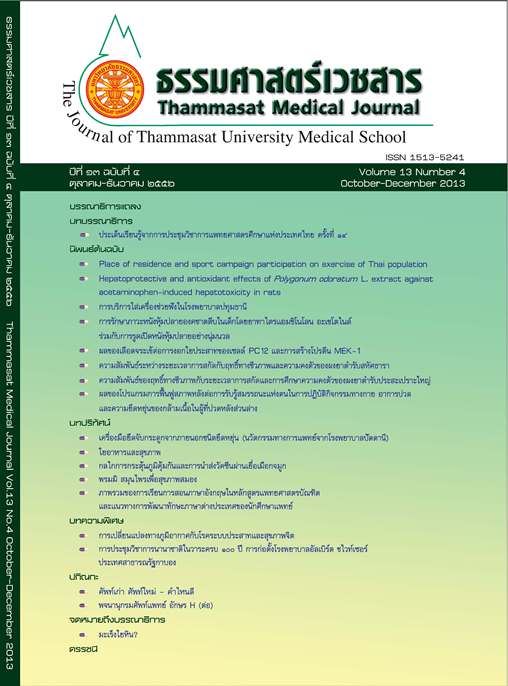Place of residence and sport campaign participation on exercise of Thai population
Keywords:
Exercise, Physical activity, Sport campaign participation, Rural, UrbanAbstract
Objective: The goal of this paper was to explore and examine causal relationship between socio-demographicfactors and sport and exercise practice among the Thai population. The objectives of this research were:(1) to analyze the difference in exercise by the place of residence (urban – rural) and socio-demographic factors,(2) to analyze the difference of a sport campaign participation in exercise by socio-demographic factors,(3) to explore the socio-demographic variations in exercise, (4) to analyze and measure the interactiveeffect between place of residence and sport participation on probabilities of practicing sport andexercise among the Thai population.
Method: We employed the data of the evaluation of health program of health promotion and sports at thelocal region in 2010. The last survey was conducted by the Institute for population and social research(IPSR) Mahidol University. This survey used the multi-stage stratifi ed random sampling. The surveyincluded 8,325 subjects aged between 15 to 70 years old. We implemented the Multinomial logisticregression model (MLR) to analyze the independent and dependent variables.
Results: Males and females shared the same proportion of non-exercise. Urban residents were more likelynot to exercise compared with rural residents. The average age of respondent was 47.6 years. We foundthat among those who did not exercise, 36.68% were not involved in any sport participation; 45.02% had noeducation and most of the respondents who did not exercise resided in the east region (37.56%). The analysisshowed that there was a positive relationship between attitudes toward exercise and sport campaignparticipation with both local and general exercise (p < 0.05). Importantly, the interactive effect between placeof residence and sport and exercise participation had strong effect on sport and exercise practicing.
Discussion and conclusion: The analysis demonstrated that attitudes toward exercise and sport campaign participation had anconclusion: infl uence on exercise behavior for both types of exercise. In addition, sport campaign participation wasmore important than the place of residence which clearly showed an increase in the probability of exercisein urban and rural areas. However, it was very important to organize sport and exercise campaign in both areas.The main result of this analysis showed that interaction between the two had a strong infl uence onprobabilities of practicing sport and exercise.
Key words: Exercise, Physical activity, Sport campaign participation, Rural, Urban


